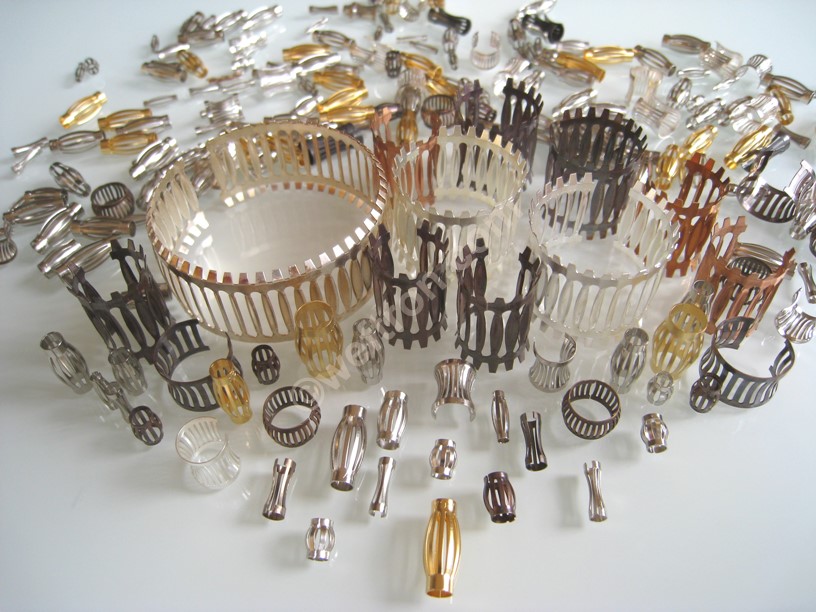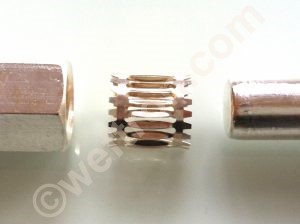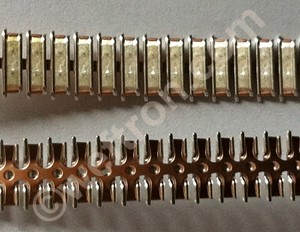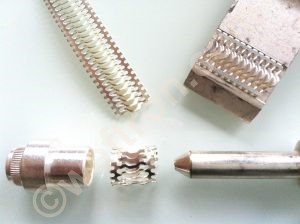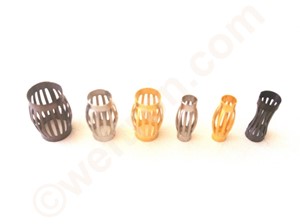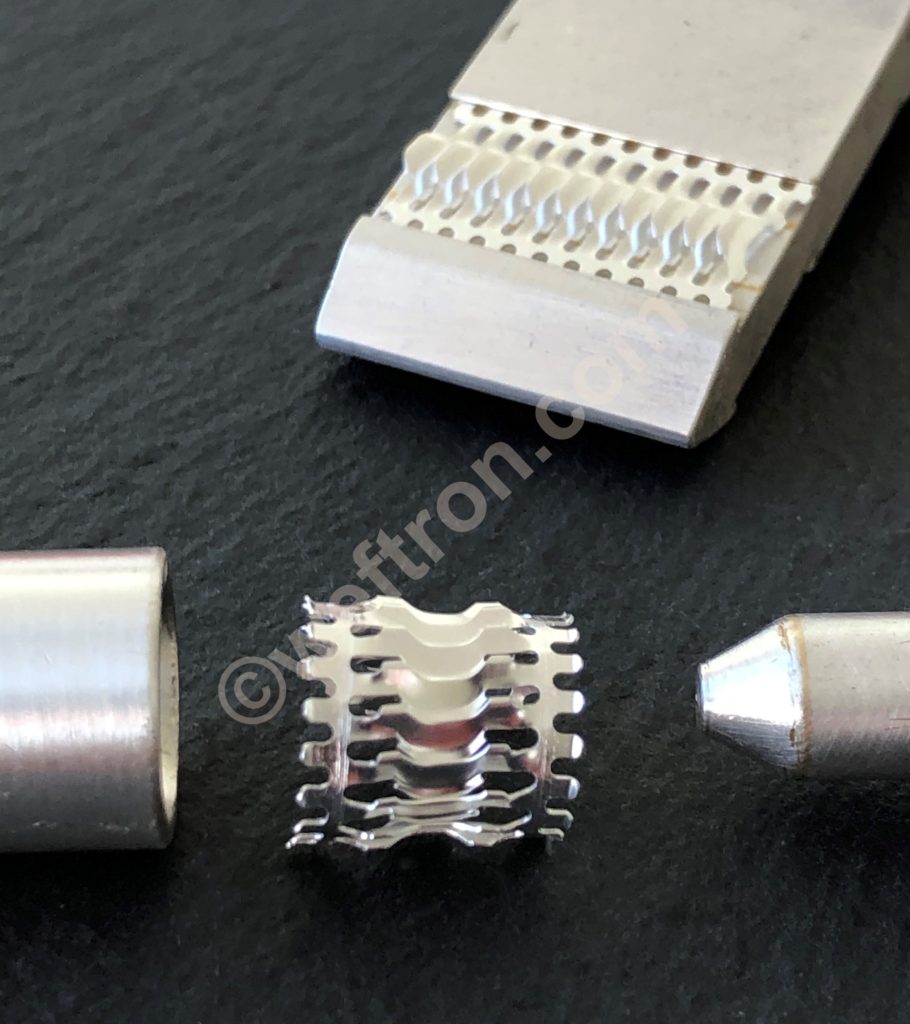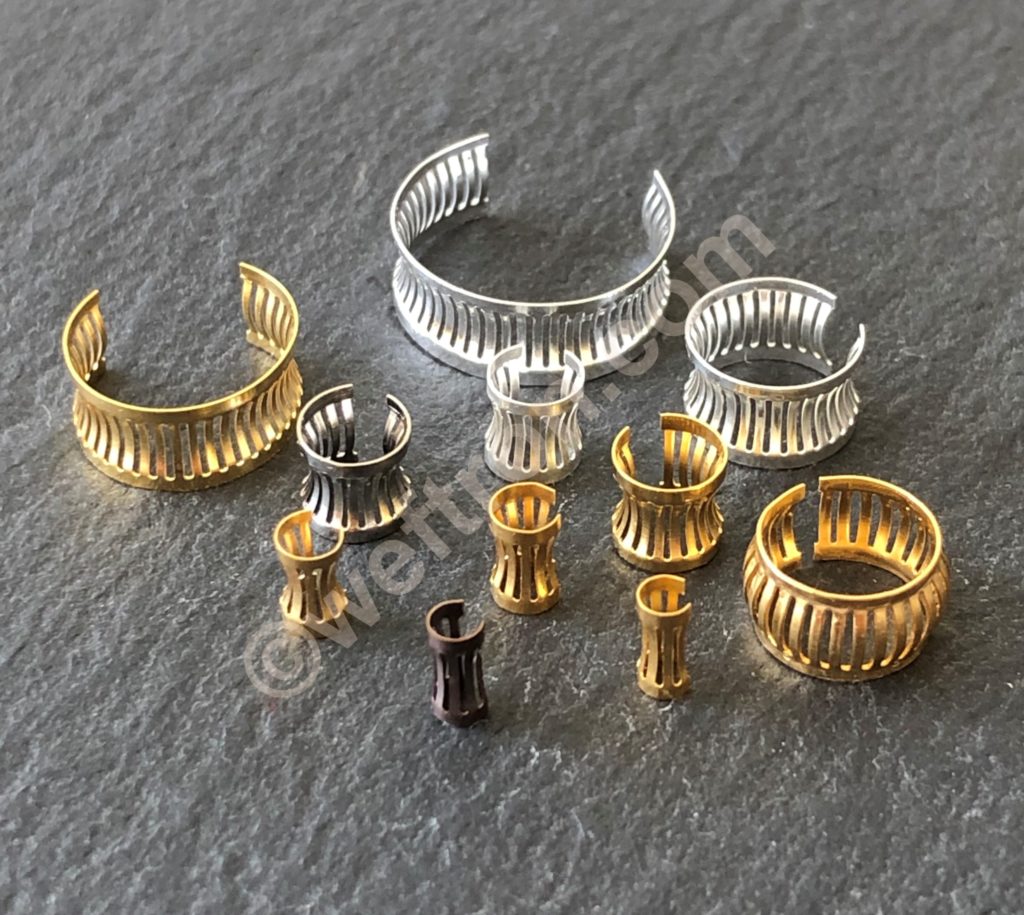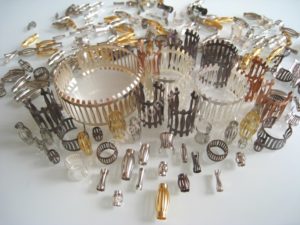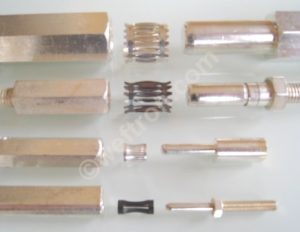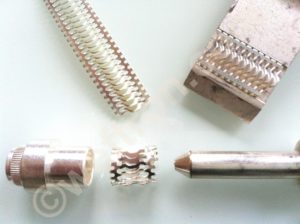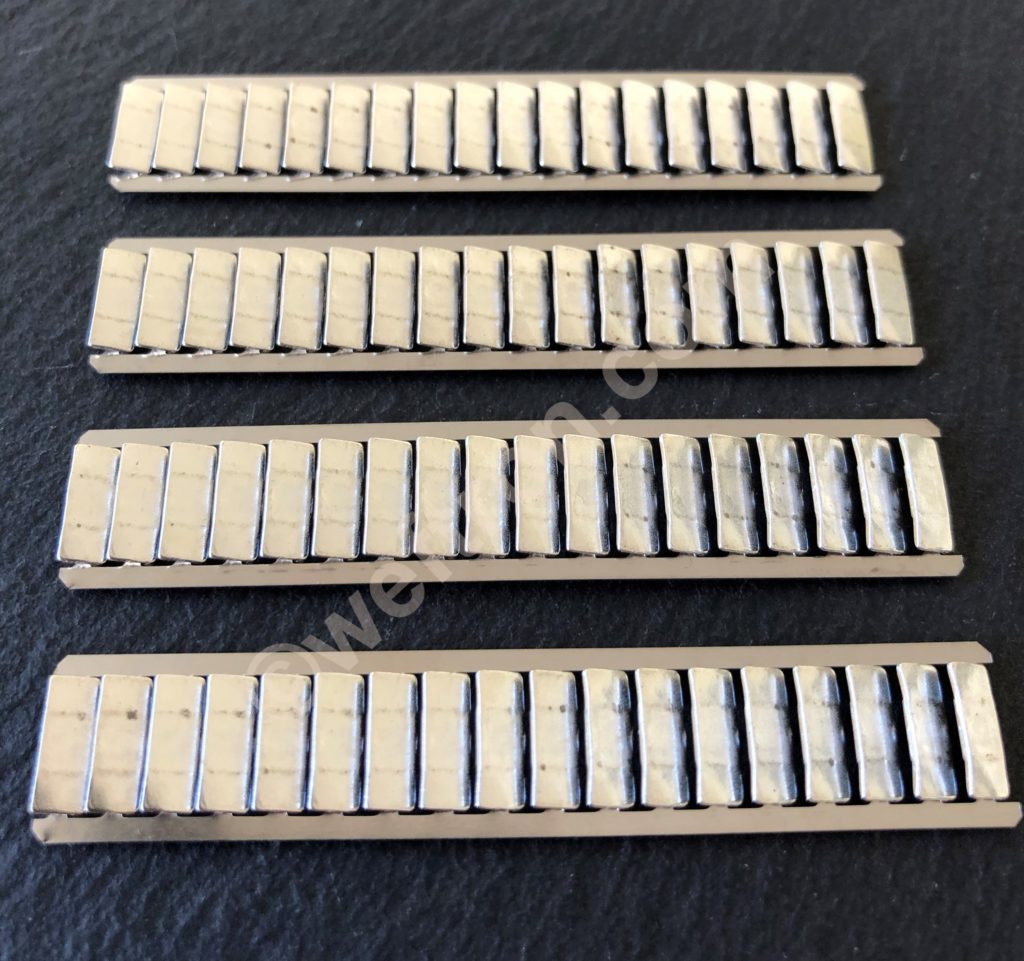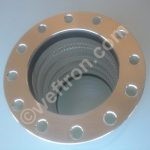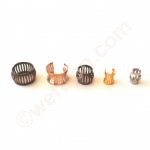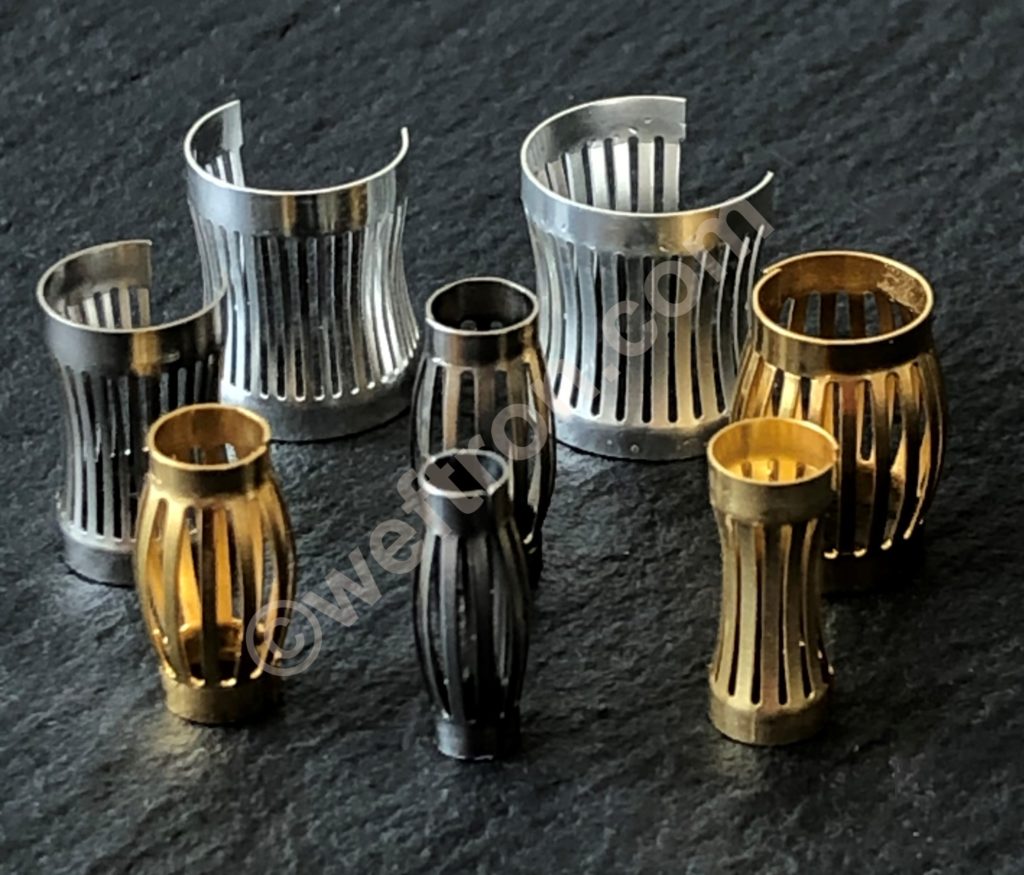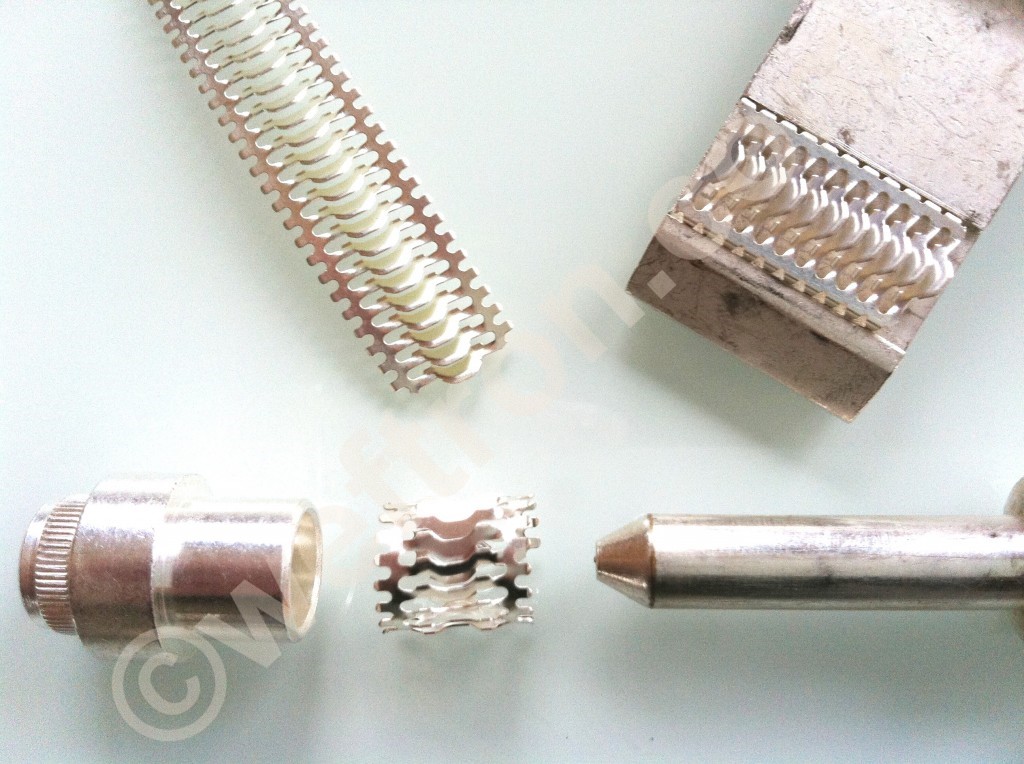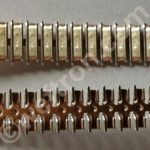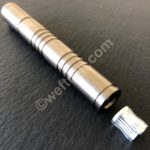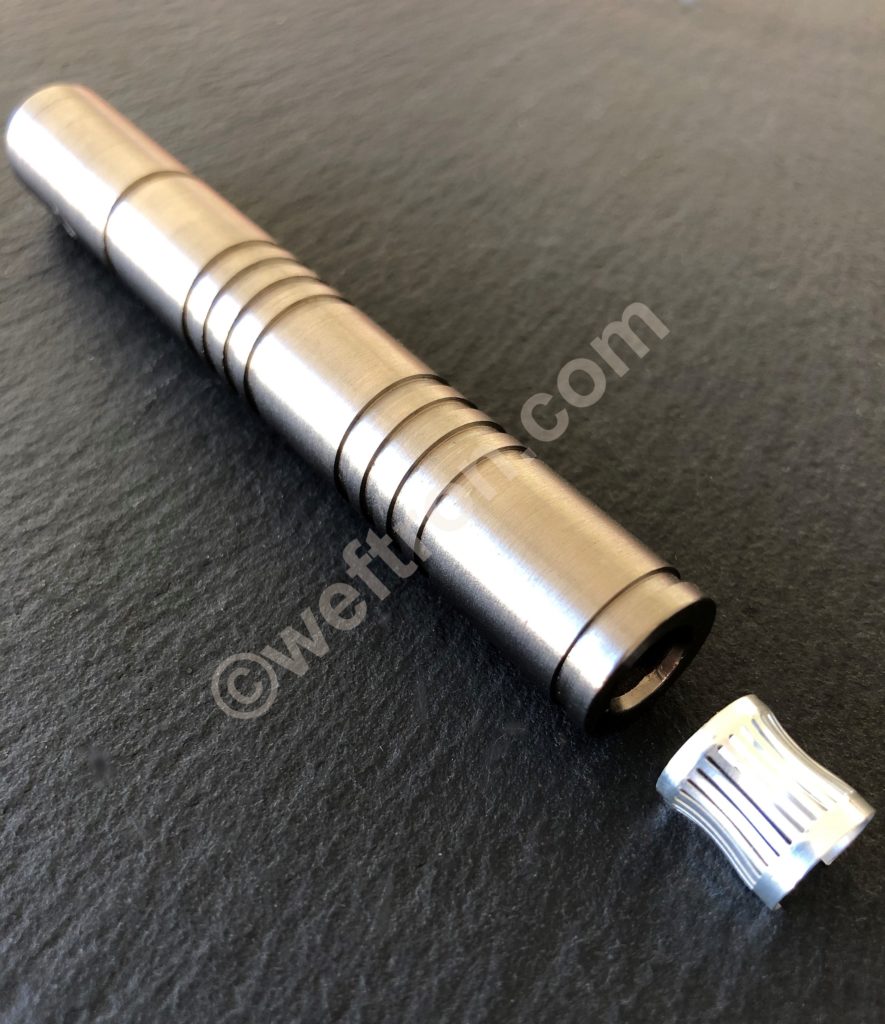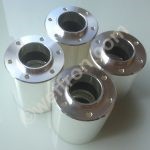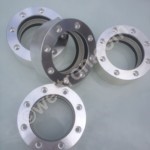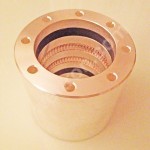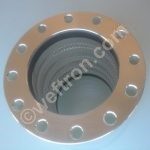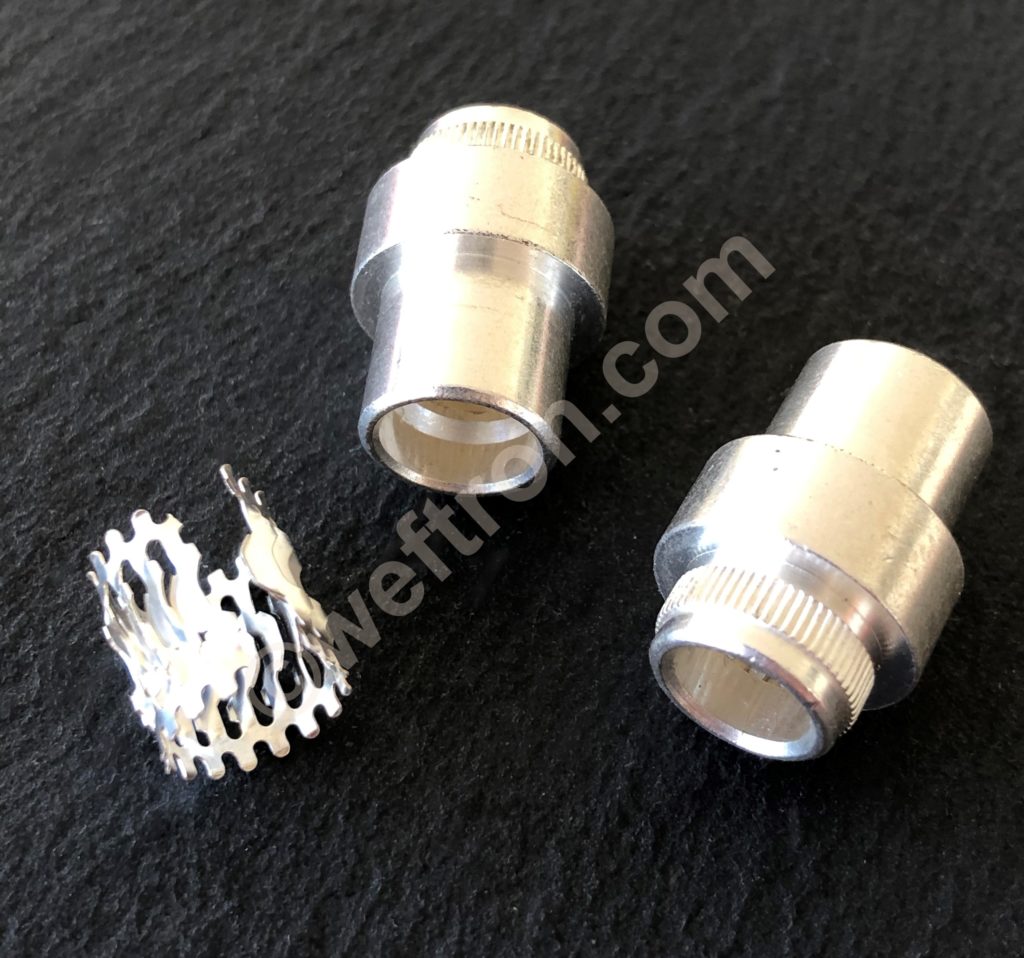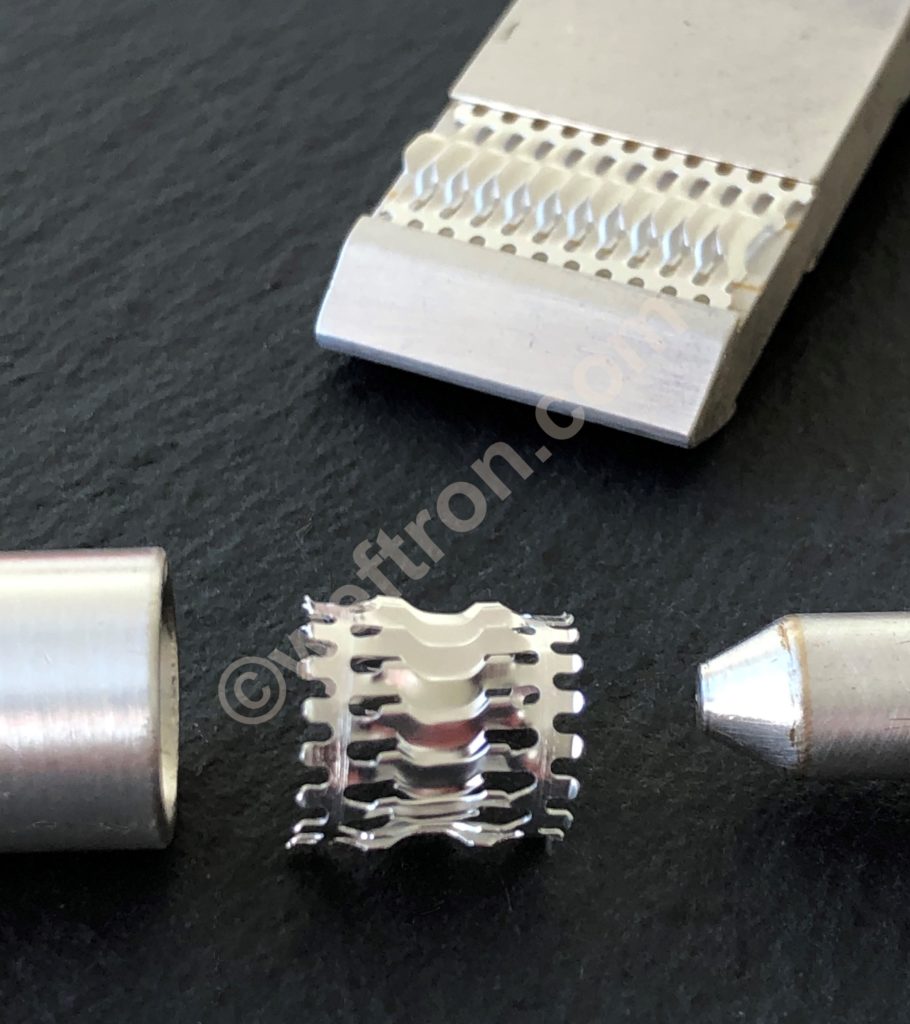
Louvered Contact Band
- Technology
louvered contact bands are precision stamped metal strips. Specifically used for electrical power and signal transmission between metal components of an electrical connection. Markedly louver shaped contact bridges are arranged in parallel along the length of the stamped metal band. Similarly to ladder rungs they are attached to the side rims of the metal strip. So these louvers perform as individual mechanical torsion springs when in use between two mating metal surfaces as well as electrically conduction elements.
Mating metal components
The mating metal connector components may be round in shape as for example in pin and socket connectors. Furthermore they may be flat as for example with fork and knife type contacts such as busbar connectors. Or they may also be used in between two flat mating surfaces such as pressure plate connections. So the louvered contact band will be fixed to either of the mating components. Hence it will be compressed to working height when both components are mated. In this mated condition the individual contact bridges will exert even and precisely defined mechanical spring force between the two components and will perform as the functioning conducting elements for passing electrical current.
Each of the contact bridges act as precisely defined contact points that represent low resistance connections arranged in a parallel circuit. In reference to Ohm's law the more contact points per foot print the lower will be the total contact resistance of the connector.
Electrical connectors are often used under extreme mechanical and environmental conditions. With high current loads on small footprint. Subjected to heavy vibrations as well as continuous micromotion. Extreme temperatures and aggressive environments.
Such conditions require high quality electrical connections. Connectors with Louver_tron contact band by weftron.com are the best choice to provide High Performance Contacts for those special requirements. Louvered contact bands may be classified in two categories. - Single component contact bands - which are stamped from one material and - Multi Component contact bands - which are composed of a carrier strip of one material with attached individual contact plates of another material.
Continue reading about the materials used in louvered contacts.....
